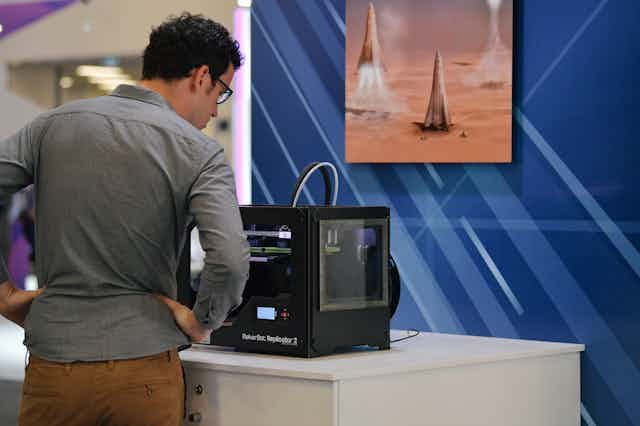The tale of new technologies causing the death of work is the prophecy that keeps on giving. Despite evidence to the contrary, we still view technological change today as being more rapid and dramatic in its consequences than ever before.
The mistaken view that robots will take our jobs may come from a human bias to believe that “we live in special times”. An absence of knowledge of history, the greater intensity of feeling about events which we experience first-hand, and perhaps a desire to attribute significance to the times in which we live, all contribute to this bias.
History repeating
In the 1930s, John Maynard Keynes envisaged that innovations such as electricity would produce a world where people spent most of their time on leisure activities. In the United States in the 1960s, Lyndon Johnson established a Presidential Commission to investigate fears that automation was permanently reducing the amount of work available.
Australia has not escaped the prophecy, with similar concerns about the future of work expressed in the 1970s.
In their history of Monash University, Graeme Davison and Kate Murphy report that:
In 1978, the historian Ian Turner, organised a symposium on the implications of the new technologies. The world, he predicted, was about to enter a period as significant as the Neolithic or Industrial revolutions. By 1988, at least a quarter of the Australian workforce would be made redundant by technological change…
Some years later, Barry Jones continued the gloomy forecasts in his best-seller Sleepers Wake!:
In the 1980s, new technologies can decimate the labour force in the goods producing sectors of the economy…
Of course, none of this came to pass in Australia; just as work did not disappear in the 1930s in the United Kingdom, or the 1960s in the United States.
Yet today, we are seeing the resurrection of the prophecy. Commentary on the Australian labour market abounds with claims that the world of work is undergoing radical and unprecedented change.
The increased application of computer-based technologies in the workplace is suggested to be causing a reduction in the total amount of work available; or to be bringing a more rapid pace of substitution of machines for humans than has been seen previously.
No evidence for the death of work
In recent research with Michael Coelli, we argue that the prophecy is no more likely to be realised in the 2010s in Australia than in the 1970s.
Certainly, there is no evidence that the death of work is at present underway. Since the mid-1960s the aggregate hours worked by the Australian population (on a per capita basis) has remained stable.
In particular, there has been no long-run decline in the aggregate amount of work that matches the timing of the progressive introduction of computers to the workplace since the early 1980s.
Moreover, the pace at which workers are churning between jobs in the Australian labour market is not getting quicker. Not only is there no evidence that more workers are being forced to work in short duration jobs, but what is apparent is that the opposite has happened. The proportion of workers in very long duration jobs has increased over the past three decades.
Why work is not disappearing
There are good reasons why we should not expect new technologies to cause the death of work. New technologies always cause job losses, but that is only part of the story. What also needs to be understood is how they increase the amount of work available.
One way this happens is through the increases in incomes that accompany the application of new technologies. With the introduction of these technologies, it may take less labour time to produce what used to be consumed, but higher real incomes, together with an apparently unlimited human desire to spend, bring extra demand (for existing products as well as for new types of goods and services), and hence for workers to provide those extra goods and services.
As well, new technologies are likely to substitute for some types of workers, but to be complementary to, and hence increase demand for, other types of workers. Computer-based technologies appear to be complementary to workers who perform non-routine cognitive jobs.
In a report on the digitally enabled workforce, Stefan Hajkowicz and co-authors suggest a range of examples for Australia – such as an increase in demand for photographers at the same time as demand for photographic developers and printers has decreased; an increase in demand for graphic designers versus a decrease in demand for printers and graphic press workers; and a decrease in demand for bank tellers simultaneously with an increase in demand for finance professionals.
The end of work is no closer in Australia today than at any time in the past. So, perhaps there is a need to keep disproving the prophecy, to change our mindset.

